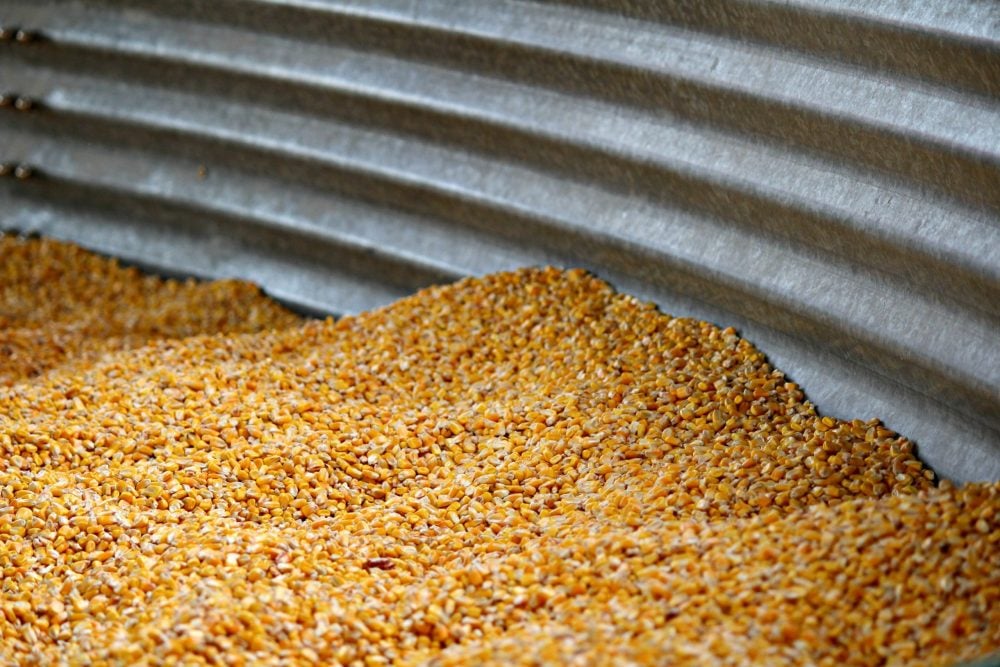Ontario wheat, corn and soybean prices are relatively unchanged, compared to two weeks ago. It’s that time of year where the grain and oilseed markets are focused on demand and South American growing conditions.
Quick look
Soybeans: Global soybean futures functioning to encourage demand.
Corn: Local markets are encouraging corn imports.
Wheat: Risk premium in global markets eroding.
In the absence of any concerns, the markets generally trend lower. Coronavirus fears have resulted in demand uncertainty not only from China but all of Southeast Asia.
Read Also

Cycle swings dictate farming profitability
It can be profitable to understand where the crop markets are positioned in the context of their big-picture cycles.
Ontario grain and oilseed markets have been isolated from world fundamentals due to the year-over-year decline in 2019 production levels. This resulted in local cash prices incorporating a risk premium in an effort to curb exports.
Now that we’re in the latter half of the crop year, this risk premium will have a tendency to erode. Given this overall environment, we have a somewhat bearish outlook for commodity markets for world values and Ontario cash prices.
As of Feb. 7, the Brazilian soybean harvest was estimated at 15 per cent complete, compared to the five-year average progress of 13 per cent. The Brazilian real has traded near historical lows over the last month, enhancing farmer sales. Favourable weather has enhanced crop prospects in both Argentina and Brazil.
Despite the coronavirus fears and recent purchases of Brazilian soybeans, China’s President Xi Jinping has reassured United States President Donald Trump that China will meet the import targets set out in the so-called Phase One agreement between the two countries. It is interesting to note that China’s consumer price index was up 5.4 per cent on a year-over-year basis; the food price index was up 20.6 per cent in January largely due to the rise in pork prices.
The Canadian dollar has been trading at near three-month lows, which has cushioned domestic corn and soybean prices against the decrease in the world market. Weakness in crude oil values along with negative fiscal policy has contributed to the recent deterioration. Monetary policy appears to be neutral for the time being with the Bank of Canada concerned about Canadian productivity relative to other G7 countries. High household debt and steady inflation are two additional factors justifying the Bank of Canada position to keep interest rates unchanged in the short term.
Soybeans
The Canadian soybean crush from Sept. 1 through Dec. 31 was 585,538 tonnes, down from the year-ago crush of 737,388 tonnes. The oilseed crush margin structure has favored canola over soybeans resulting in lower domestic demand for soybeans. Canadian crop year-to-date soybean exports to Dec. 31 were 2.1 million tonnes, down from 3.2 million tonnes last year.
Chinese demand has been non-existent; however we’ve seen a year-over-year increase in exports to Europe, Iran, Bangladesh and Algeria. Unfortunately, this buying interest mostly favours West Coast shipments.
The Baltic Dry index, which tracks the cost of bulk freight, has been trading near historical lows. This freight environment favours larger vessels over farther distances. Ontario soybean prices continue to trade at a discount to imported U.S. values, therefore, total imports for the year may be down from earlier estimates.
The soybean futures are functioning to encourage demand in the short term. Brazilian soybean cargoes are offered at a slight discount to U.S. origin out of the Gulf of Mexico. Currently, bids from U.S. domestic crushers are also reflecting a minor premium over U.S. export offers; therefore, the export pace has slowed in the short term. We’re expecting strength in the meal market over the next month, which should be supportive for soybean prices in Ontario and the U.S.
What to do: We’ve advised producers to be 80 per cent sold on their 2019 production and 20 per cent sold on new crop. The soybean market will digest the Brazilian harvest over next month, which will limit the upside on any bounce. Export demand for Ontario soybeans will remain sluggish for the remainder of the crop year.
Corn
Domestic demand continues to dictate the price structure for the Ontario corn market. Canadian crop year-to-date corn exports for the week ending Feb. 2 were only 12,500 tonnes, compared to year-ago exports of 811,800 tonnes. Local prices are higher than export values, which is limiting export movement. The Ontario corn market is functioning to encourage imports and the use of alternative grains in domestic feed channels.
Statistics Canada estimated total Canadian corn stocks as of Dec. 31 at 10.7 million tonnes, down from 11.6 million tonnes on Dec. 31, 2018. There is still a fair amount of crop out in field so we feel the stocks are lower than the StatsCan estimate.
Crop year-to-date feed use was estimated at 3.3 million tonnes, up from 3.1 million tonnes last year while human food and industrial use was 1.8 million tonnes, about the same as last year. Corn use for ethanol production appears to be running similar to last year. Stocks reports are important because they confirm the production estimate and provide an idea of domestic feed use. We don’t see any numbers on this report that would alter the market structure. We are seeing a minor year-over-year increase in wheat use in domestic feed channels, which is to be expected given the lower quality Canadian wheat crop and the year-over-year decrease in corn imports. We expect to see more wheat used in the domestic feed market in the latter half of the crop year.
The U.S. export pace has improved as values out of the Gulf are competitive on the world market. We’ll likely see steady U.S. export demand until Brazil’s second-crop corn comes on the market in early summer.
Secondly, domestic feed use makes a seasonal high in late winter and early spring. Once we get over this hump, the world market will start to focus on North American seeding conditions and crop prospects.
We continue to forecast a four per cent to six per cent year-over-year increase in U.S. corn acres. The corn futures market will come under pressure in spring; however, Ontario prices will lag the weakness in the world market due to the tight domestic supplies.
What to do: In my previous report, we advised Ontario producers to be 60 per cent sold on their 2019. This week, we’re advising producers to increase sales to 70 per cent. For 2020, we’ve recommended that producers forward contract about 10 per cent of their expected production.
Wheat
Ontario wheat prices are relatively unchanged from two weeks ago. However, world values have softened.
There is a strong seasonal tendency for wheat prices to trend lower from early March through the end of April. This is largely because seasonal rains typically fall across the U.S. hard red winter wheat region and the crop comes out of dormancy.
Secondly, the Russian winter wheat situation is improving. Earlier in winter, there were concerns regarding the above normal temperatures and the limited snow cover in the Volga and southern districts. The current forecast calls for no adverse temperatures so the risk premium in the market is slowly eroding with spring around the corner. These are the two main factors weighing on the world wheat market in the short term.
Ontario remains an island among major exporters. The weaker Canadian dollar and historically tight stocks of soft red winter wheat in Canada and the U.S. continue to support domestic Canadian prices. There are some concerns that the extensive precipitation in the U.S. soft red winter wheat region may result in above-normal winterkill, for the second year in a row.
What to do: We’re recommending that producers sell 10 per cent of their 2019 milling wheat crop, bringing total sales to 80 per cent. We want to have the bulk of the crop sold before the seasonal downward pressure.
There always seems to be a surge in farmer selling in April and May. Traders are always amazed at how much wheat comes out of the woodwork when the market slips off historical highs. We’ll save the final 20 per cent for later in spring, once the Ontario and U.S. soft red winter wheat production is more certain.













